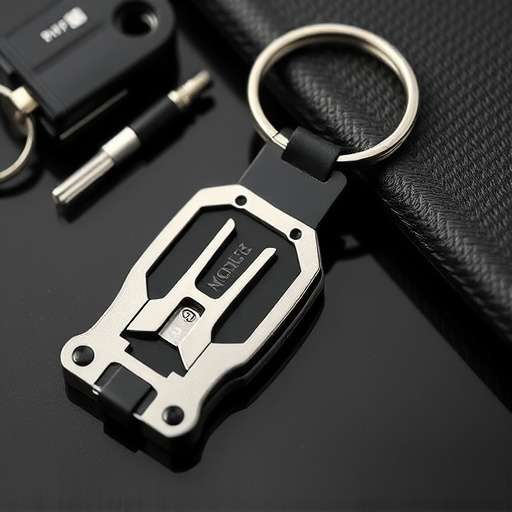Designing compact keychain self-defense tools requires a deep understanding of Legal Self Defense Keychain Regulations due to varying legal frameworks worldwide. Designers must balance functionality, portability, and legal adherence while creating effective deterrents. Staying informed about local regulations is crucial for product legality, with designs adapting to meet market demand for personal safety devices while navigating complex legal and consumer trends.
In today’s world, personal safety is a top priority. One innovative solution gaining traction is the compact keychain defense tool—a versatile self-defense device designed for easy carrying. This article explores the global landscape of Legal Self Defense Keychain Regulations, delving into the design considerations and market trends shaping these portable tools. We examine how creators navigate safety, legality, and public demand, offering insights into the evolving world of compact keychain defense tools.
- Understanding Legal Self-Defense Keychain Regulations: A Global Perspective
- Design Considerations for Compact Keychain Defense Tools
- Navigating Safety, Legality, and Market Trends in Keychain Self-Defense Products
Understanding Legal Self-Defense Keychain Regulations: A Global Perspective
In the global landscape of self-defense tools, understanding local regulations is paramount, especially for compact keychain designs intended for personal safety. Legal Self-Defense Keychain Regulations vary widely across countries and regions, reflecting diverse societal views on citizen self-defense. Some jurisdictions allow for broad ownership of self-defense devices, while others have strict controls or even outright bans. For instance, certain European countries might permit small pepper spray canisters as legal self-defense keychains, whereas many Asian nations have stringent regulations against any form of personal defense tool carried openly.
Navigating these Legal Self-Defense Keychain Regulations requires designers and users to stay informed about their region’s laws. Failure to comply can result in hefty fines or even criminal charges. As a result, the market for keychain defense tools often adapts to these legal frameworks, leading to innovative designs that balance functionality with compliance. This global perspective underscores the importance of responsible ownership and understanding one’s rights and responsibilities when carrying self-defense tools on their person.
Design Considerations for Compact Keychain Defense Tools
When designing a compact keychain defense tool, it’s crucial to balance functionality with portability while adhering to legal self-defense regulations. The primary consideration is the tool’s effectiveness as a deterrent and its ease of use in various situations. For instance, a small, yet powerful flashlight attached to a keychain could serve as a disorienting device during potential threats. However, designers must ensure these tools do not exceed legal limits regarding force and self-defense capabilities defined by local regulations.
Size optimization is key, ensuring the tool fits comfortably on a keychain without compromising its integrity or performance. Materials play a significant role; lightweight yet durable options are ideal to minimize bulk while maintaining strength. Additionally, the tool’s versatility can enhance its appeal—a multi-function device with features like a knife, pepper spray, or alarm could offer more protection in diverse scenarios. Always stay informed about and comply with local Legal Self Defense Keychain Regulations to ensure your design is both practical and legal.
Navigating Safety, Legality, and Market Trends in Keychain Self-Defense Products
Navigating safety, legality, and market trends is paramount when designing keychain self-defense tools. In many regions, regulations surrounding legal self-defense keychains are stringent, with specific requirements on size, functionality, and trigger mechanisms to ensure minimal harm while maintaining effectiveness. These regulations vary widely, necessitating designers to thoroughly research local laws before bringing their products to market.
Understanding market trends is equally crucial. The demand for compact and accessible personal safety devices has been steadily rising, driven by a growing awareness of individual security needs. Keychain self-defense tools, appealing due to their portability and convenience, must strike a balance between effectiveness and user-friendliness while adhering to legal Self Defense Keychain Regulations. Staying informed about consumer preferences and industry innovations ensures that designs remain competitive and relevant in a dynamic market.
In light of global variations in Legal Self-Defense Keychain Regulations, designing compact keychain defense tools requires a nuanced understanding of safety, legality, and market trends. By adhering to legal guidelines while incorporating innovative design considerations, manufacturers can offer effective yet responsible self-defense solutions. Staying informed about evolving regulations and consumer preferences is crucial for creating impactful and compliant keychain defense tools that enhance personal security without compromising ethical standards.
